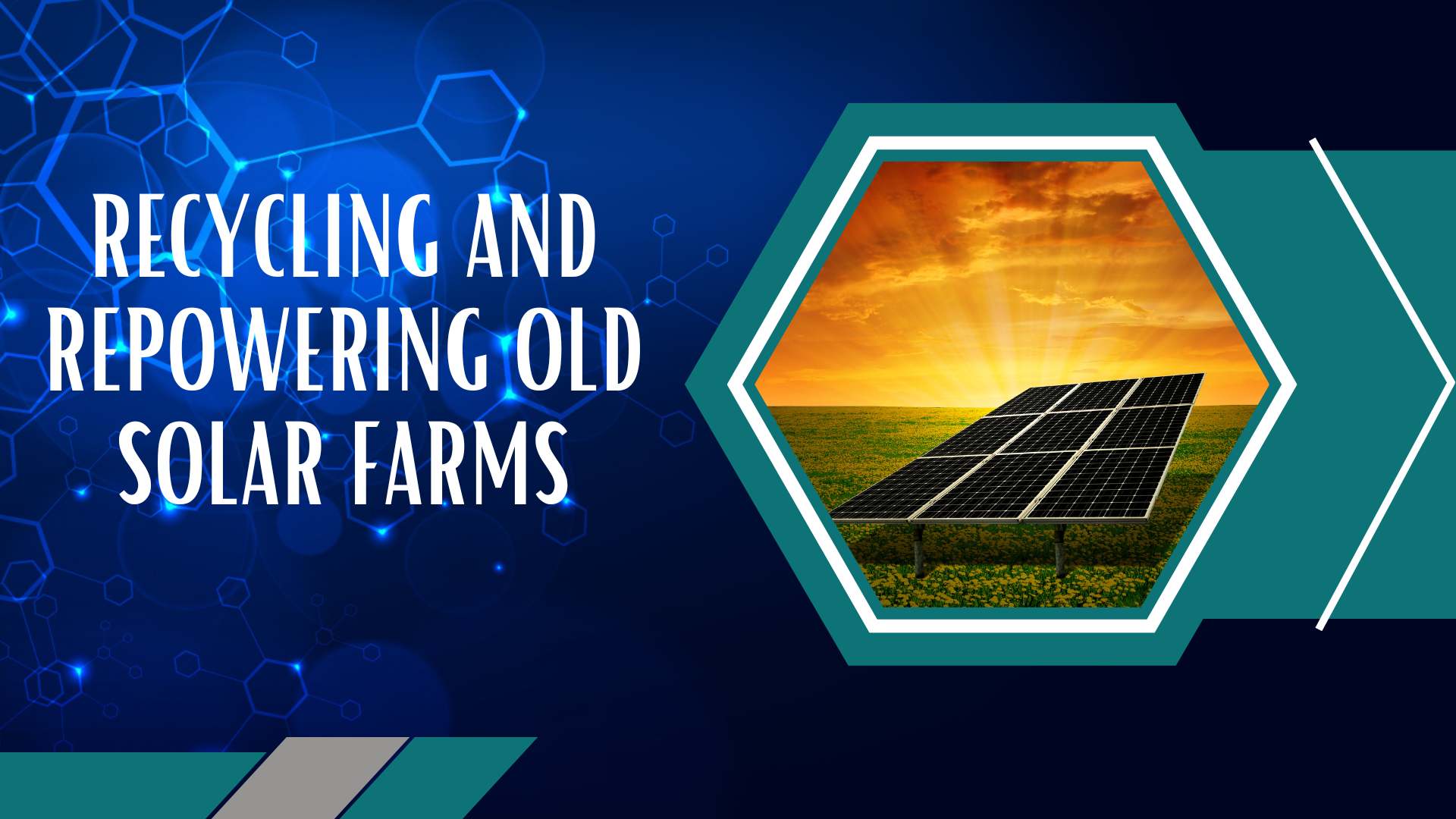Recycling and Repowering Old Solar Farms
Unlocking Sustainability: Recycling and Repowering Old Solar Farms in the EU
As the solar energy industry continues to mature, a growing number of solar farms across the European Union (EU) are reaching the end of their lifespan. However, rather than viewing these aging solar installations as mere liabilities, there is a tremendous opportunity to transform them into assets of sustainability. Through recycling and repowering initiatives, old solar farms can be given a new lease on life. Contributing to the EU’s renewable energy goals while minimizing waste and maximizing resource efficiency. Let’s explore the importance of recycling and repowering old solar farms in the EU and delve into the benefits and strategies associated with these sustainable practices.
The Need for Recycling and Repowering
As the number of solar installations in the EU increases, the need to address the end-of-life management of aging solar farms becomes crucial. Recycling and repowering offer viable solutions to extend the lifespan of these installations. It can reduce environmental impact, and capitalize on the potential for further renewable energy generation. By treating old solar farms as valuable resources rather than burdens, we can unlock a host of benefits.
Recycling Old Solar Farms: Reducing Waste and Maximizing Resource Efficiency
a. Material Recovery: Solar panels are composed of valuable materials, including glass, metals, and silicon. Through effective recycling processes, these materials can be recovered. Then reused in the manufacturing of new solar panels or other industries. This reduces the need for virgin raw materials, conserves resources, and minimizes waste generation.
b. Hazardous Materials Management: Solar panels contain small amounts of hazardous materials, such as lead and cadmium. Proper recycling ensures the safe handling and disposal of these materials, mitigating potential environmental and health risks. Specialized recycling facilities and processes are designed to minimize the release of hazardous substances. Also to protect both the environment and workers.
c. Circular Economy Approach: Recycling old solar farms aligns with the principles of the circular economy. By extending the life cycle of solar panels through recycling, we create a closed-loop system. Where materials are continuously reused, reducing the demand for new resources and minimizing waste.
Maximizing Energy Generation Potential
Repowering refers to upgrading or replacing existing solar installations to enhance their energy generation capacity and efficiency. Repowering old solar farms in the EU offers several advantages:
a. Improved Technology: Solar technology has evolved significantly over the years. By repowering, outdated panels can be replaced with more efficient and advanced ones. Thus maximizing energy production and optimizing the overall performance of the solar farm.
b. Increased Output: Repowering allows for the installation of higher-capacity solar panels or additional panels within the existing infrastructure. This increases the overall energy generation capacity of the solar farm, maximizing its contribution to the renewable energy mix.
c. Grid Integration and Stability: Repowered solar farms can be equipped with advanced inverters and grid management systems. Enabling better integration into the existing power grid. This enhances grid stability. Improves power quality, and facilitates the integration of intermittent renewable energy sources into the broader energy system.
Repowering Challenges and Strategies
While repowering offers significant benefits, several challenges need to be addressed:
a. Regulatory and Permitting Frameworks: Streamlining regulatory processes and permitting requirements can facilitate the repowering of old solar farms. Governments and regulatory bodies can establish clear guidelines and incentives to encourage repowering projects, ensuring a smooth transition and minimal administrative barriers.
b. Financial Considerations: Repowering can require substantial upfront investments. Governments, financial institutions, and project developers need to explore innovative financing mechanisms and incentives to support repowering initiatives, making them economically viable for all stakeholders.
c. Technical Assessments: Thorough technical assessments are essential to determine the feasibility and potential of repowering projects. These assessments should include detailed evaluations of existing infrastructure, energy production potential, grid connection capabilities, and cost-benefit analyses.
Case Studies and Success Stories
Several EU countries have embraced the recycling and repowering of old solar farms, showcasing successful outcomes and valuable lessons:
a. Germany: Germany’s „Solar Valley” in Saxony-Anhalt is a prime example of repowering efforts. By upgrading existing solar installations and implementing advanced technologies, the region has significantly increased its solar energy generation capacity.
b. Spain: Spain has established recycling programs and advanced facilities for the recycling of solar panels. These initiatives promote resource recovery and contribute to a circular economy approach for the solar industry.
c. The Netherlands: The Netherlands has implemented policies and financial incentives to encourage repowering of old solar farms. Through repowering projects, the country has achieved higher energy production and increased efficiency.
The recycling and repowering of old solar farms in the EU represent crucial steps towards a sustainable and circular solar energy industry.
By embracing these practices, we can reduce waste, maximize resource efficiency, and enhance the EU’s renewable energy capacity. Recycling ensures the responsible management of materials while repowering unlocks the potential for increased energy generation. Governments, industry stakeholders, and investors must collaborate to establish supportive policies, financing mechanisms, and streamlined processes to drive the recycling and repowering revolution. Together, we can transform old solar farms into beacons of sustainable energy, contributing to a cleaner and more resilient future for the European Union.
If you are interested in recycling Your solar modules or investing in solar farms in Poland, don’t hesitate to get in touch with us at +48 797 897 895 or biuro@lighthief.com
Read about solar asset management in Poland.
Also, read about Solar Investments in Poland.
Read about Poland’s solar farms industry.
Also, about Chinese solar investors in Poland.
Read about O&M services on solar farms.

